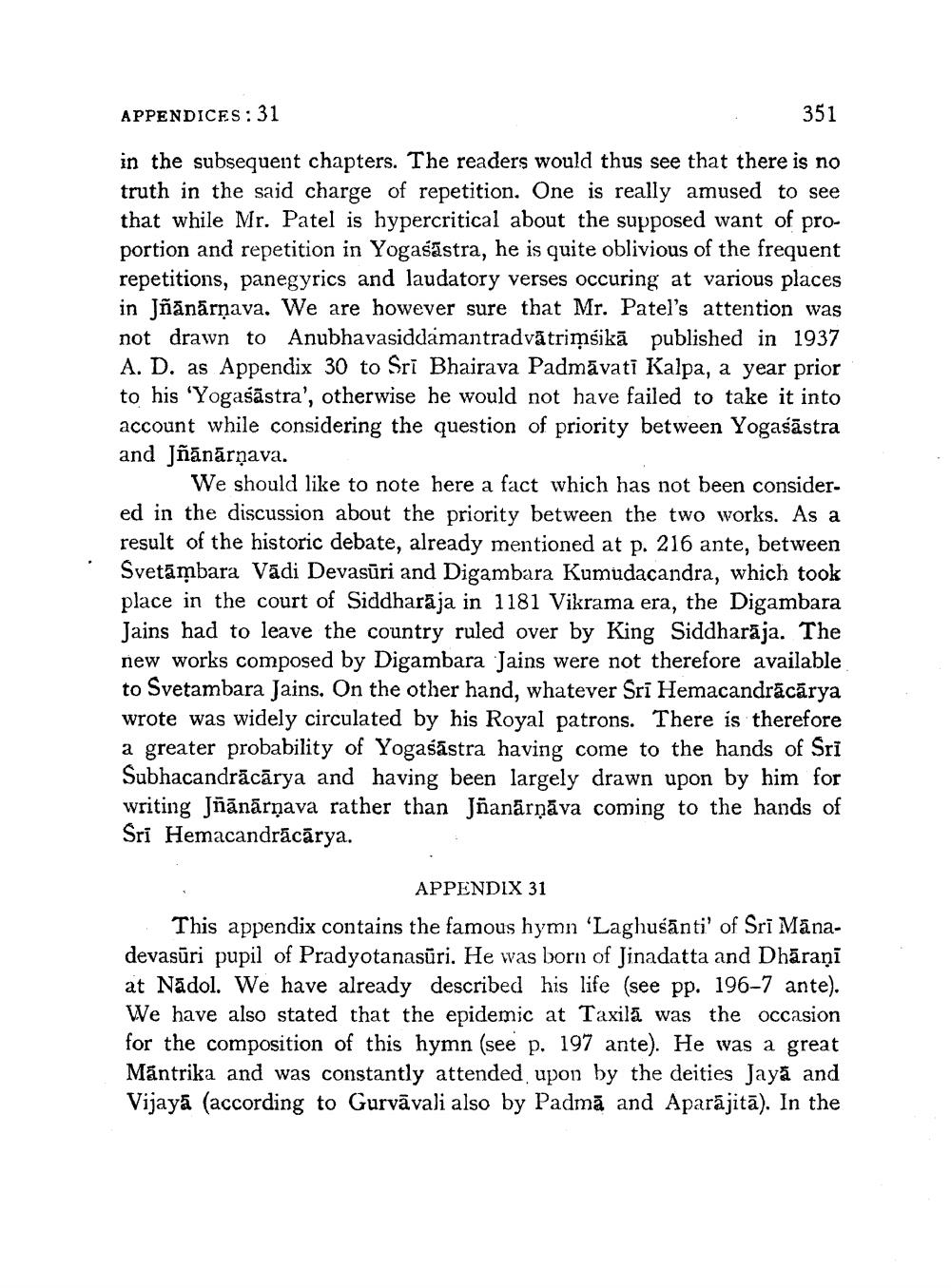________________
APPENDICES:31
351
in the subsequent chapters. The readers would thus see that there is no truth in the said charge of repetition. One is really amused to see that while Mr. Patel is hypercritical about the supposed want of proportion and repetition in Yogaśāstra, he is quite oblivious of the frequent repetitions, panegyrics and laudatory verses occuring at various places in Jñānārņava. We are however sure that Mr. Patel's attention was not drawn to Anubhavasiddamantradvātrimsikā published in 1937 A. D. as Appendix 30 to Sri Bhairava Padmavati Kalpa, a year prior to his 'Yogašāstra', otherwise he would not have failed to take it into account while considering the question of priority between Yogaśāstra and jñānārņava.
We should like to note here a fact which has not been considered in the discussion about the priority between the two works. As a result of the historic debate, already mentioned at p. 216 ante, between Svetambara Vādi Devasūri and Digambara Kumudacandra, which took place in the court of Siddharāja in 1181 Vikrama era, the Digambara Jains had to leave the country ruled over by King Siddharāja. The new works composed by Digambara Jains were not therefore available to Svetambara Jains. On the other hand, whatever Sri Hemacandrācārya wrote was widely circulated by his Royal patrons. There is therefore a greater probability of Yogaśāstra having come to the hands of Sri Subhacandrācārya and having been largely drawn upon by him for writing Jñānārņava rather than Jñanārnāva coming to the hands of Sri Hemacandrācārya.
APPENDIX 31 This appendix contains the famous hymn 'Laghuśānti' of Sri Manadevasūri pupil of Pradyotanasūri. He was born of Jinadatta and Dhāraņi at Nádol. We have already described his life (see pp. 196-7 ante). We have also stated that the epidemic at Taxila was the occasion for the composition of this hymn (see p. 197 ante). He was a great Mántrika and was constantly attended upon by the deities Jaya and Vijayā (according to Gurvāvali also by Padmā and Aparājitā). In the




